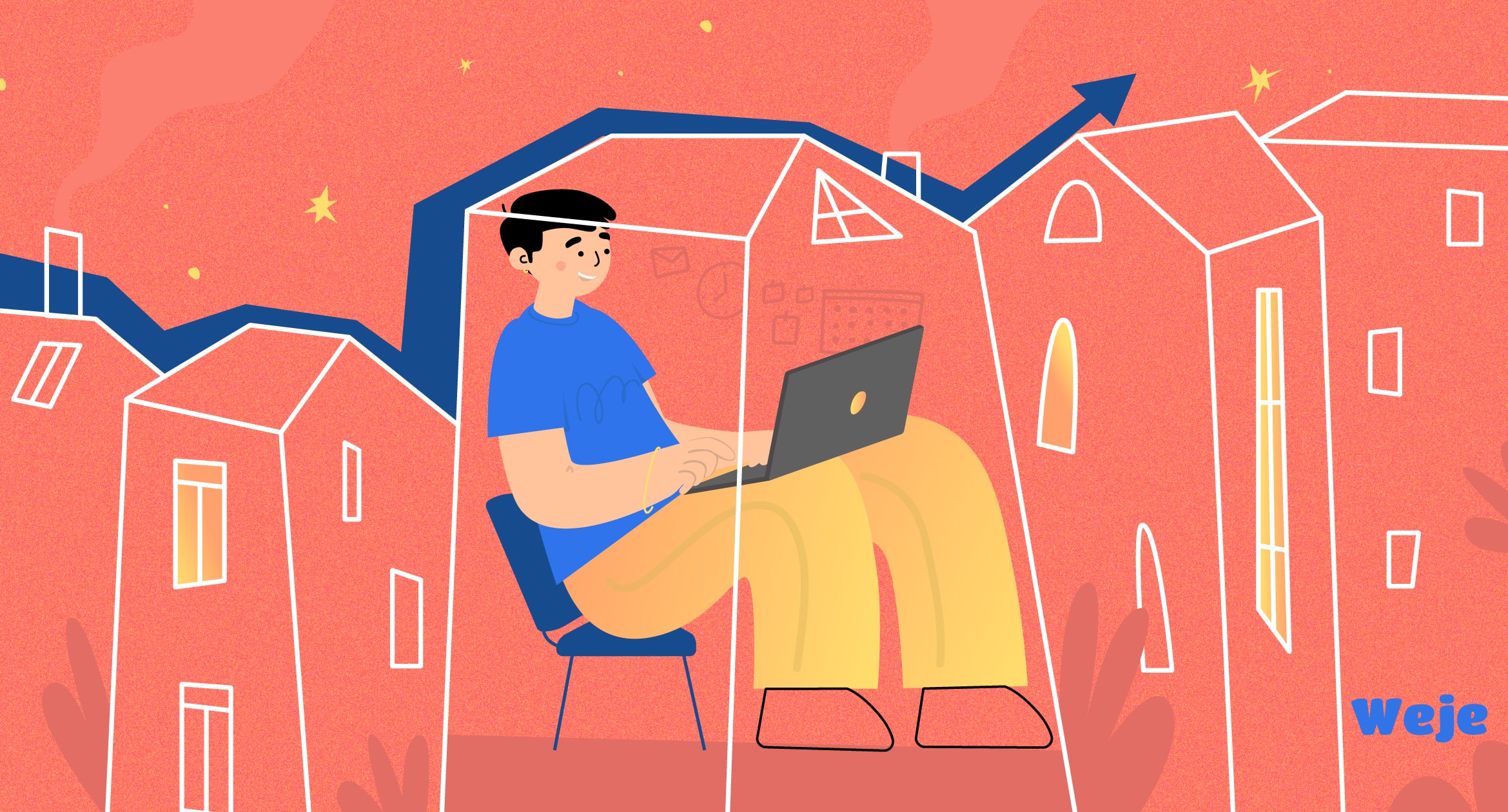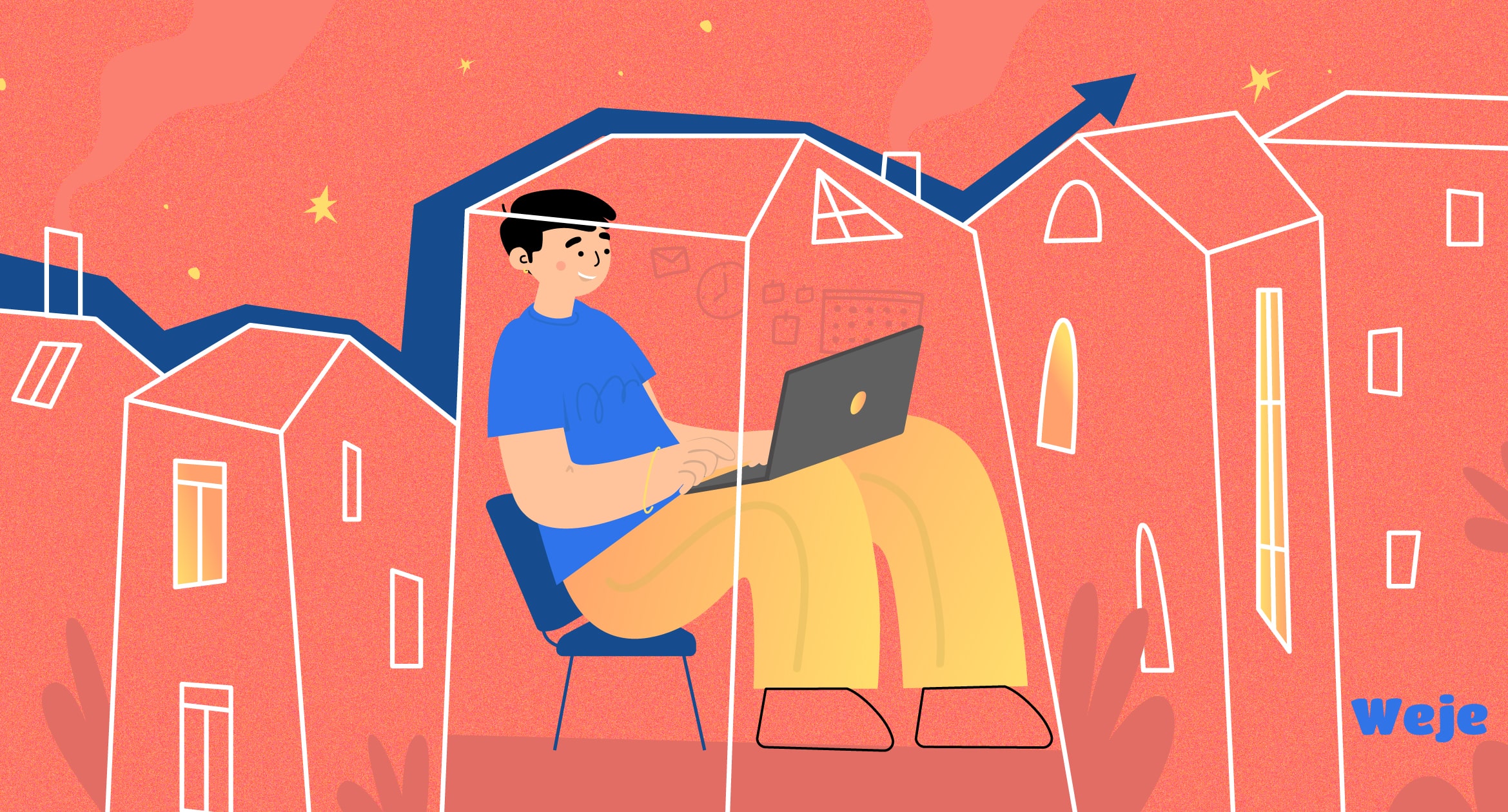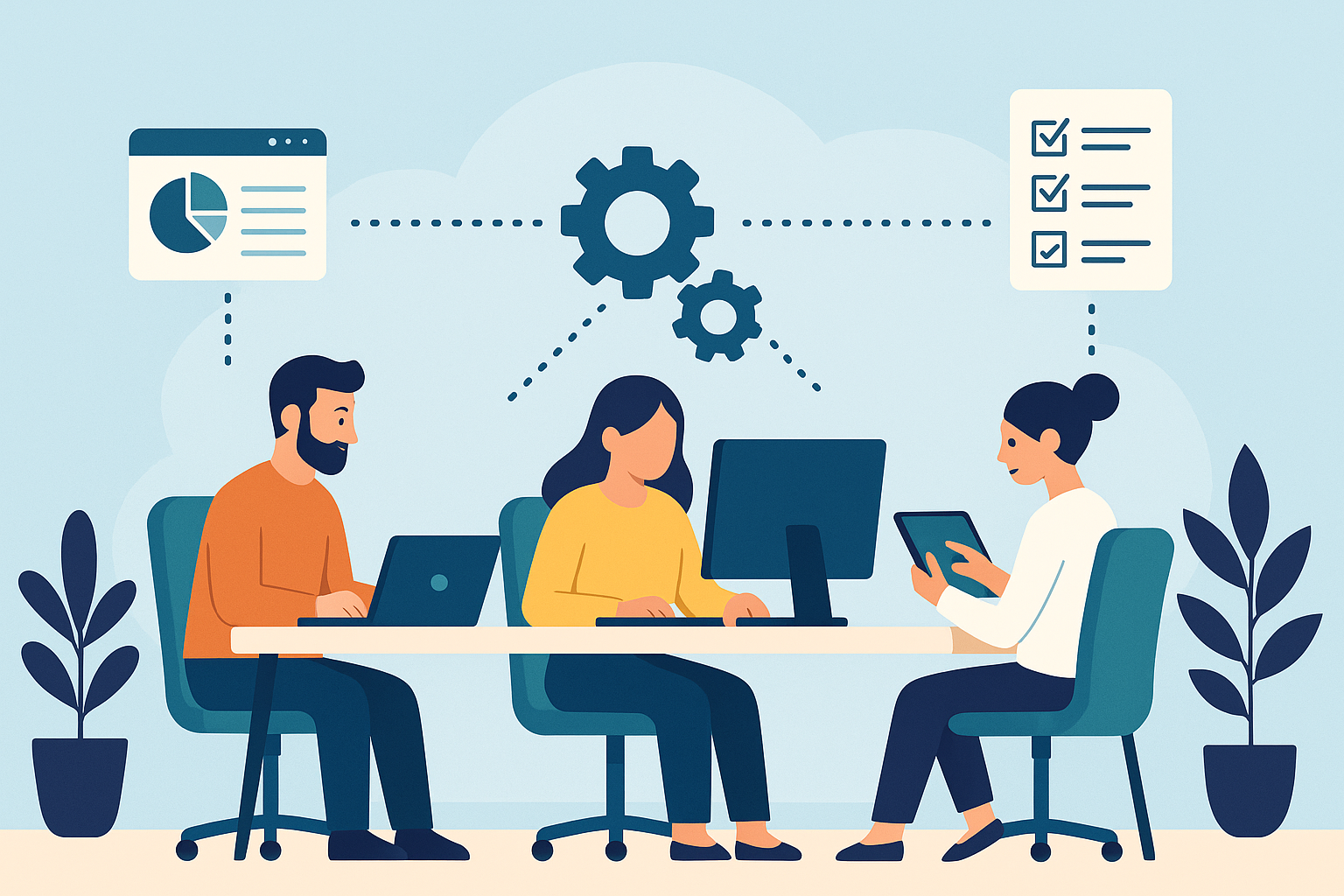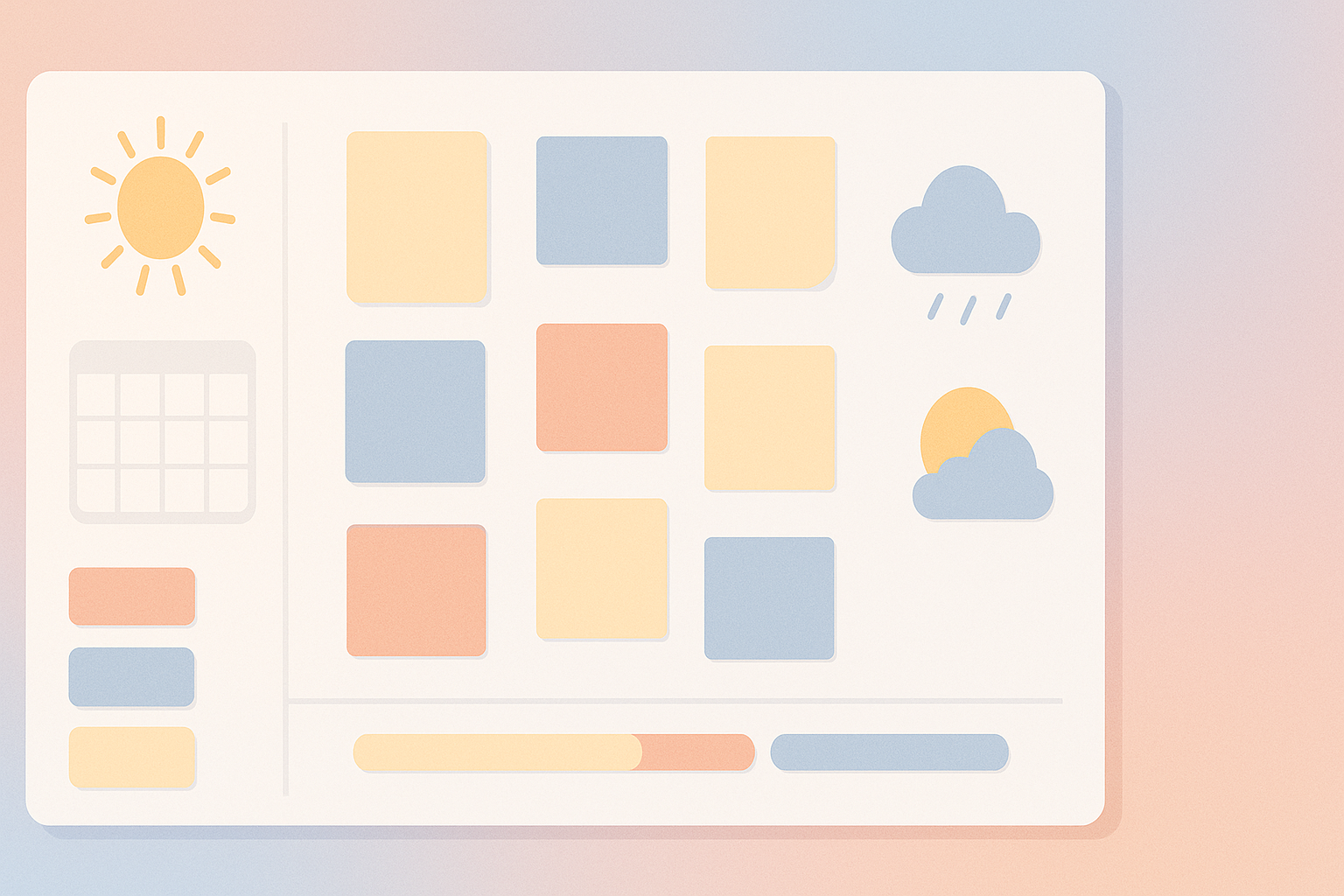The “how to be more productive” topic is a concern for many people, especially now, when 57% of teams work partially or fully remotely. Although work from home brings obvious benefits to employees, for example, eliminates the need to drive hours to an office, it still has flip sides. Among the most common things – vagueness, lower engagement with the company, stress, inability to organize the day, and others.
The good news is that these threats are manageable. It’s just the question of establishing helpful habits that help to achieve the same productivity at home, as in the office, or – even higher. Below, you can check out 7 tips on how to do this.
How to be more productive at home
Watch your workplace
Does this case sound familiar to you? – As soon as one declutters the room and clears out all the junk, the brain slacks off, fresh ideas begin to appear, and the overall emotional state gets better straight away? This effect isn’t magic or karma stuff – this is just how the human mind and attention work.
Every day people face many issues that require paying attention – from skimming through the menus and choosing what to eat for breakfast to launching space flights for tourists. Regardless of the hardness of tasks or choices, they all form the overall informational environment we live in. And our eyes catch around 90% of that in the form of visual objects, e.g. people we see, the content we read, videos we watch, and so on.
But the truth is – an average person can remember up to 4 visual objects during a short time. That is because our attention has a limited amount of free “slots”, a kind of operative memory that can keep and process data. Even though we may not think about physical objects that surround us, we still observe them. So, with too much stuff in a room, the brain becomes overloaded soon and can’t use all of its capacity to solve tasks. Consequently, we suffer from procrastination, inability to concentrate, fatigue, low-level creative thinking, and so on.
To be more productive at home, you should arrange the working area:
- zone the flat – there should be distinct corners to work, have meals, and take a rest
- clean the desktop – leave the laptop or computer, notebook with pen, desk lamp, and a glass of water
- provide yourself with silence – find some quiet spot at home and occupy it
- take care of ventilation – air out the room every few hours
- put plants around – green color is associated with refreshment; it calms down and tunes in the working mood.
Prepare an order of the day
Scheduling is essential for mental health care because obscurity is one of the causes of anxiety and stress. Using digital calendars can help visualize your tasks and bring clarity to your day. Jordan Peterson, one of the most famous US psychologists, says that the first thing he suggests to clients who suffer from anxiety is – to stick to a schedule. Because when you know what goes next, you feel safe and can concentrate on the ongoing task, rather than worry about an uncertain future.
While working at home, workout a timetable and try to stick to it. This may be:
- 6.30 p.m. – wake up
- 6.30 p.m. – 7.40 p.m. – morning jogging (or yoga, workout, pilates, etc)
- 7.40 p.m. – 8 p.m.- refreshment
- 8 p.m – 8.30 p.m – breakfast
- 8.30 p.m. – 9 p.m. – chill time
- 9 p.m. – 11 p.m. – productive hours
- 11 p.m. – 11.15 p.m. – 1st break
- 11.15 p.m. – 2 p.m – productive hours
- 2 p.m. – 2.30 p.m. dinner
- 2.30 p.m. – 4 p.m. – productive hours
- 4 p.m. – 4.15 p.m. – 2nd break
- 4.15 p.m. – 6 p.m. – productive hours.
There should be time to work and have rest, and the two mustn’t blend. Stay fully focused on work during productive hours – no socials, no snacks, no talks. And, vice versa, there should be no place for businesses during your leisure time. Live by a clock for 2-3 weeks, and you’ll see that you have started to keep up with everything and the work-life has improved balance.
Do one thing at a time
Remember times when job applicants mentioned multitasking in the “Strengths” chapter of their CVs? The good news is – those days are gone. Today, scientists and foremost online magazines, like Forbes, claim that multitasking is rather a weakness. Not many people can effectively deal with several jobs at a time – for the majority, such an attempt leads to nothing is completed 100%. This is because humans don’t act like computers. To switch attention, we need recovery work cycles. And if our focus continuously swings like a pendulum between issues, the overall productivity drops by up to 40%.
Moreover, multitasking lowers IQ. According to scientific experiments, men who did several mental puzzles at a time lowered their IQ scores to the level of an 8 years-old kid after a while. This is partly because an intensive mental load forces the body to produce more cortisol – a “stress hormone”. To avoid these unpleasant consequences, perform one task at a time:
- don’t strive for the quantity of “Done” issues – estimate time per task and plan your workday, accordingly
- think about projects in terms of weeks, not hours or days
- set time for communication, e.g. checking the “Inbox” or answering colleagues in Slack, and don’t hold on to distractions during the remaining work time.
Know own productive hours
Although the typical workday lasts 8 hours, employees are fully productive only 3 hours a day, on average. This is because most of the time people spend on meetings, calls, switching between tasks, answering questions, having chats with one another, and so on. To work full blast during these 180 minutes, you need to understand during what part of the day – ante or post meridiem – to “book” them.
For example, if you’re an “early bird”, you’ll probably be more effective in the morning. Thus, when you plan daily affairs, put the most important or difficult tasks in the first half of the day. These may be:
- analytical jobs – collecting various intelligence, market or competitors investigations, proceeding CRMs’ data, checking financial statements, etc
- creative jobs – working out new product concepts, making designs, filming, and so on
- strategic planning – preparing new projects, re-thinking business operations, nurturing ideas, etc.
Considering apps that can make your work routine more efficient is essential too. For carpenters, in particular, organizing estimates and invoices digitally can save considerable time. Explore tools like Joist app for carpenters to streamline tasks seamlessly.
The remaining half of the day you can reserve for works that involve interactions with people, e.g.:
- team meetings or calls
- meetings with clients
- brainstorming & strategic planning
- presentations & reporting, and others.
Prioritize & work in sprints
Time is a limited and priceless resource, so watch how you invest it. Vilfredo Pareto once described a power distribution, when 80% of results people receive are brought by only 20% of their efforts. To be more productive, find out what contributes to these proverbial “twenty percent”, and then – prioritize burdens.
There are many planning techniques you can use. The simplest is the 4-quadrant prioritization matrix (also called The Eisenhower Matrix).

Here, you allocate all assignments into one of 4 groups, depending on their urgency and impact. One should always start with the superior 2 quadrants, and only after – proceed to the remaining tasks.
You can also try:
- MOSCOW method – classify tasks into “Must-haves”, “Should-haves”, “Could-haves”, and “Won’t have”
- “Value vs effort” – grade “Quick wins” (high value + low effort), “Big projects” (high value + high effort), “Fill-ins” (low value + low effort), and “Time-sinks” (low value + high effort)
- Weighted shortest job first (WSJF) – with this you should calculate and divide the cost of delay of the assignment by its duration; after – start with tasks having the highest WSJF
- RICE – this is a scoring model that refers to product features prioritization, but you catch the principle and adapt it to your project needs; every point is assessed and scored from 4 angles: “reach” – how many people will it influence, “impact” – how important it’ll be, “confidence” – how confident are assessors in 3 other marks, “effort” – how much time and money the implementation will require.
After you’ve set an order for tasks, start carrying them out during 25-30 minutes sprints. Meanwhile, take 5-7 minutes breaks to recover.
Collaborate smart
Zoom, Skype, and Slack are certainly useful, but if you explore the universe called “team collaboration tools”, you’ll take the next step in performance. There are tools for any taste – from specific project management and time-logging software, like Jira or ClickUp, to all-purpose instruments for sole- and teamwork.
Among the last-mentioned, you can try Weje. This is a free online whiteboard – a boundless canvas where you can store information, edit, and share it with the team. The usage is straightforward: you create an account with the email and land on the workspace straight away. Here, you can pick up templates, e.g. SWOT table, workflow, report for an investor, or start with a blank digital whiteboard.
Add any data or media by dragging & dropping from the Internet or uploading files from the hard drive. For simultaneous editing, you can give access to colleagues or external stakeholders. After the work is finished, you can download results or share via email or social media.
Dress up before the workday
When you sit at home, there is a trap of spending the entire day in sleepwear. “Noone sees me, so why bothering?” – one may think. But dressing does make a difference. A study conducted by Australian researchers has shown that working in PJs affects mental health and leads to people becoming more disorganized and inefficient. No matter how comfy you feel in pajamas, change it on some outfit before getting down to business.
Productivity consists of many components – physical health, mood, environment, collaborators, workload, motivation, and so on. Improving something one, e.g. dressing up or starting the day with a healthy breakfast, is, probably, not enough. To be productive at home, you have to rethink the entire day and make it more well-ordered. And don’t overdo it, frankly. Hurriedness multiplied by solitude will inevitably result in burnout.
Published: August 20, 2021





